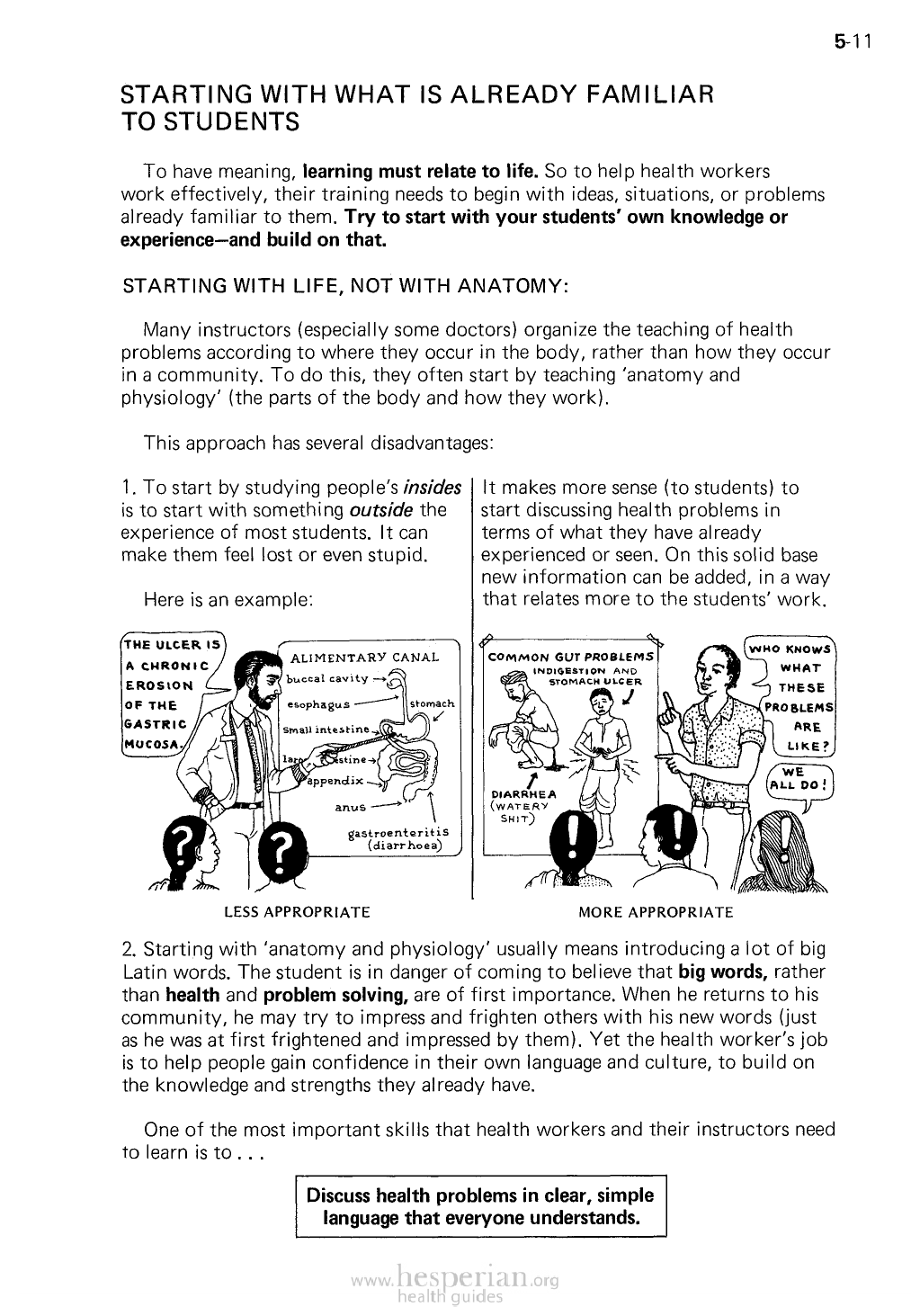
5-11
STARTING WITH WHAT IS ALREADY FAMILIAR TO
STUDENTS
To have meaning, learning must relate to life. So to help health workers
work effectively, their training needs to begin with ideas, situations, or
problems already familiar to them. Try to start with your students’ own
knowledge or experience—and build on that.
STARTING WITH LIFE, NOT WITH ANATOMY:
Many instructors (especially some doctors) organize the teaching of health
problems according to where they occur in the body, rather than how they
occur in a community. To do this, they often start by teaching ‘anatomy and
physiology’ (the parts of the body and how they work).
This approach has several disadvantages:
1. To start by studying people’s insides
is to start with something outside the
experience of most students. It can
make them feel lost or even stupid.
Here is an example:
It makes more sense (to students)
to start discussing health problems
in terms of what they have already
experienced or seen. On this solid base
new information can be added, in a way
that relates more to the students’ work.
LESS APPROPRIATE
MORE APPROPRIATE
2. Starting with ‘anatomy and physiology’ usually means introducing a lot of big
Latin words. The student is in danger of coming to believe that big words, rather
than health and problem solving, are of first importance. When he returns to his
community, he may try to impress and frighten others with his new words (just as he
was at first frightened and impressed by them). Yet the health worker’s job is to help
people gain confidence in their own language and culture, to build on the knowledge
and strengths they already have.
One of the most important skills that health workers and their instructors need to
learn is to . . .
Discuss health problems in clear, simple
language that everyone understands.